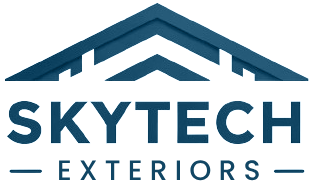Can I Install Solar Panels with a New Roof?
When considering a new roof and the possibility of
integrating solar panels, homeowners often weigh the benefits of both
investments. Installing solar panels alongside a new roof can be a strategic
decision, combining energy efficiency with long-term savings. In this guide, we
explore the factors to consider, the benefits of solar integration, and
practical insights for homeowners in the consideration stage of their roofing
and solar energy journey.
Understanding Solar Panel Integration with New Roofs
Simultaneous Installation Benefits:
Statistical Insight: According to the Solar Energy
Industries Association (SEIA), homes with solar panels typically reduce
electricity bills by 50-100%.
Installing solar panels during a new roof installation
ensures compatibility and optimal performance, minimizing future installation
costs and disruptions.
Roof Suitability for Solar Panels:
Statistical Insight: The National Renewable Energy
Laboratory (NREL) recommends roofs with south-facing orientations and minimal
shading for maximum solar energy production.
Assessing roof slope, structural integrity, and age are
crucial factors when planning for solar panel installation alongside roof
replacement.
Financial Considerations and Incentives
Cost Savings and ROI:
Statistical Insight: The U.S. Department of Energy estimates
that solar panels can pay for themselves within 5-7 years through energy
savings and incentives.
Combining a new roof with solar installation allows
homeowners to capitalize on federal tax credits, state incentives, and utility
rebates to offset initial costs.
Long-Term Financial Benefits:
Statistical Insight: Homes with solar panels typically
increase property value by up to 4.1% according to a study by Zillow.
Investing in solar energy not only reduces utility expenses
but also enhances home resale potential and overall market appeal.
Practical Steps for Homeowners
Consultation with Roofing and Solar Experts:
Engage with reputable roofing contractors and solar
providers to assess roof condition, solar feasibility, and project timelines.
Local roofing companies and solar installers can offer site
assessments, detailed cost estimates, and financing options tailored to your
specific needs.
Permitting and Installation Process:
Statistical Insight: The Solar Foundation advises homeowners
to obtain necessary building permits and adhere to local regulations for solar
panel installation.
Coordinating with roofing contractors ensures compliance
with building codes and seamless integration of roofing and solar systems.
Environmental Impact and Sustainability
Reduction in Carbon Footprint:
Statistical Insight: Solar panels reduce greenhouse gas
emissions by offsetting conventional electricity generation.
Choosing renewable energy options supports environmental
sustainability goals and contributes to a cleaner, greener community.
Community and Neighborhood Considerations:
Statistical Insight: Solar Energy Industries Association
(SEIA) reports increasing community interest in solar adoption for energy
independence and environmental stewardship.
Participating in local solar initiatives and community solar
programs fosters a sustainable neighborhood and promotes solar energy
awareness.
Integrating solar panels with a new roof offers homeowners an opportunity to enhance energy efficiency, reduce utility costs, and contribute to environmental sustainability. By evaluating roof suitability, financial incentives, and consulting with roofing and solar experts, homeowners can make informed decisions that benefit both their immediate energy needs and long-term financial goals. Explore the synergy between roofing and solar technologies to create a sustainable home environment that aligns with your energy aspirations and enhances property value.


